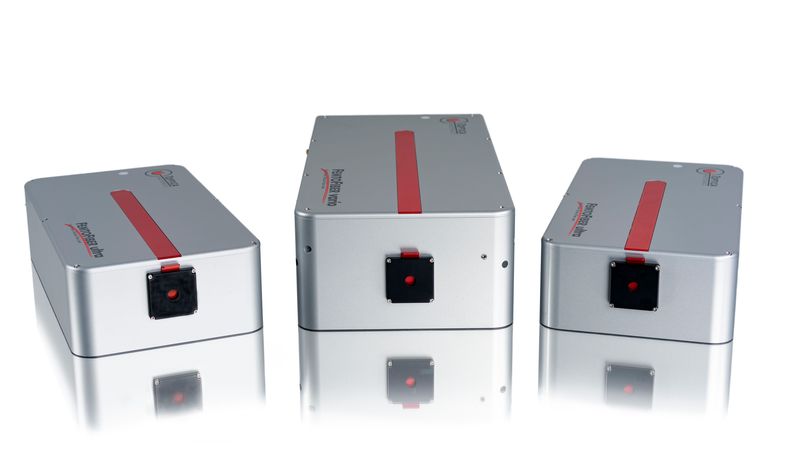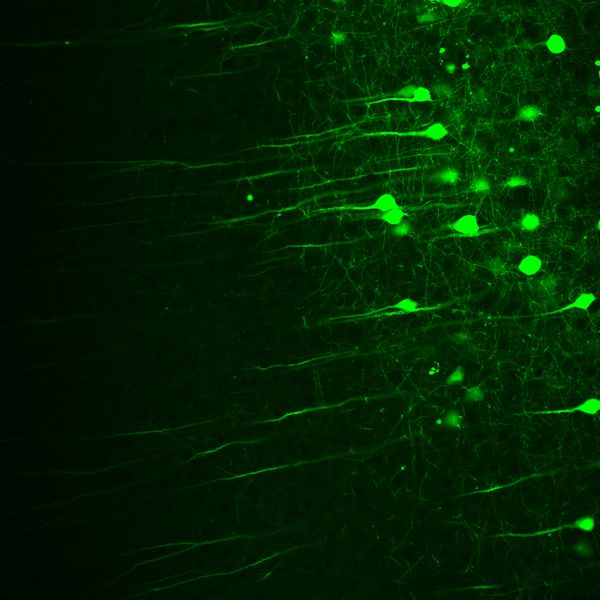Fiber Lasers for Neuroscience
2-photon fluorescence microscopy has become a key technology in biological imaging in neuroscience enabling three-dimensional, noninvasive studies of the neuronal structure and activity on the submicron scale. The contrast mechanism in 2-photon microscopy in neuroscientific research is based on the excitation of green or red fluorescent proteins, so called GFPs and RFP, by two photons in the infrared spectral range.
To drive this nonlinear process and to resolve the neurons deep within the living brain, femtosecond lasers with clean temporal pulse shape and average output powers of >1W are an essential prerequisite.
Two-photon imaging of GFP-labelled neurons from mouse brain.
Image courtesy: Dr. Hans Fried, DZNE Bonn, Germany
Going beyond pure imaging, all-optical interrogation is a novel approach to understand how active patterns in neuronal activity drive behavior. In such experiments the visualization of neuronal activity by 2-photon imaging is combined with 2-photon optogenetics to stimulate individual neurons by photoactivation of channelrhodopsins within the cell.
With the need of exciting many neurons in parallel, the laser requirements and microscopy technology for 2-photon optogenetics are fundamentally different from 2-photon imaging. Typically, high-power multi-Watt lasers at 1030-1040nm with repetition rates in the 100kHz - 1MHz range are used in combination with a spatial light modulator (SLM) to excite 10s to 100s of neurons simultaneously.
Easy to use fiber laser for 2-Photon Microscopy and 2-Photon Optogenetics in Neuroscience
To support and drive the research in neuroscience TOPTICA is proud to introduce our laser portfolio for 2-photon imaging of GFPs and RFPs, our FemtoFiber ultra 920 and FemtoFiber ultra 1050, and for 2-photon optogenetics of channelrhodopsins our FemtoFiber vario 1030 HP
All lasers are fully matched to the requirements in neuroscientific research and besides being fully turn-key, quite, and compact, they are offering integrated dispersion pre-compensation (GDD) and integrated power control (AOM) to simplify operation and to allow the scientist to focus on their research!
For details and help please get in touch: www.toptica.co


